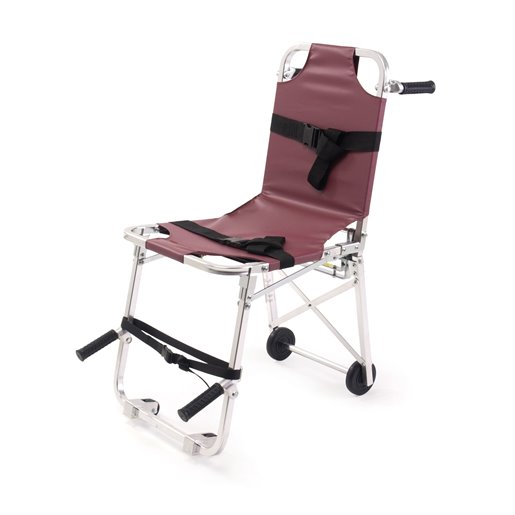My current service has no stair chairs at all. It's a recipe for disasters.
So they how do you get Grandpa out of the house when he has an MI on the 2nd floor?
On the TV show I rarely see patients carried out of their homes on stretchers. Instead, nearly every time the patient is walked to the ambulance or strapped on to a stair chair-like chair with four wheels.
I see that Stryker's recent model stair chairs come standard with four wheels and tracks. Is anyone using them? Why don't we use something similar in the United States?
That's how we used to do it back when I worked up north. the stairchair came in on almost every call; the cot was left in the locked ambulance. if you left the cot outside the door, the was a chance that it would not be there when you came out. if the patient was stable enough to walk to the ambulance, they did; if not, they were carried via the stairchair. To be perfectly honest, I have taken more than one person was taken from their second floor bedroom to the back of the ambulance via the stairchair, and then transferred them to the cot.
it was a little different if you were going into an apartment building or commercial facility with an elevator, but you get the idea.
Ferno has had
4 wheel chairs for the better part of 2 decades; the front wheels were crap as anyone who used this model can attest to
but it was doable, and much lighter than the newer models. It was my first-in carrying device every time I worked a shift on a city truck, esp one with narrow hallways and unstable staircases. My back thanked the Stryker designers when they can out with the track system (and we kept it on our truck), but I still make sure to keep this relic on the truck (and once I special called another truck to bring me one to a scene to make it easier to extricate the patient, because we were in a backup truck without one)
During my active years in EMS we always lugged in the stretcher. Up stairs, through doorways, and into tiny rooms.
then you were doing it wrong. Stretchers are not, and were not, designed to go up stairs. you can (and I have) take them up 2 steps, but that's about it. Especially when they were all the way up with a patient on them. If you have a straight shot from the truck to the patient, with no steps, than take the cot in as far as you can. And we did maneuver it into some tight positions; but in general, never take the cot up stairs.
I remember my boss one time bragging that our service was the only one in the county that was willing to take a certain dialysis patient on a stretcher with an impossibly difficult front porch. She proudly shared that even though we had several units out on workers comp due to back injuries, we rose to the challenge.
yeah, we are so afraid of a patient falling and getting sued, that we neglect to consider the workmans comp lawsuits from back injuries, especially when not everyone needs to be carried. Than again, too many providers are working with bad backs, and we wonder why we can't keep quality people who leave for less physically demanding jobs (like the fire service, construction, moving companies,etc)

